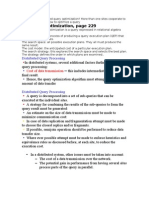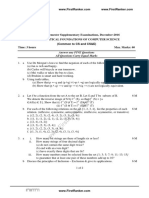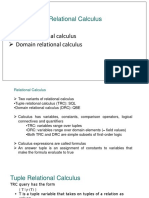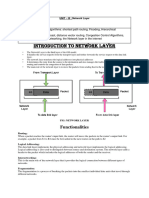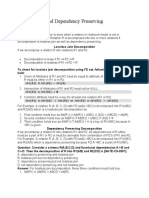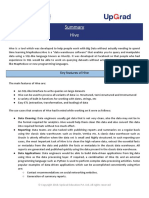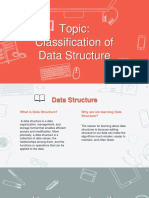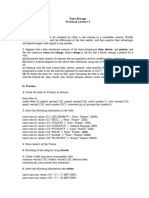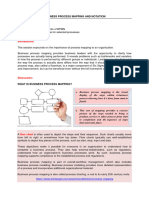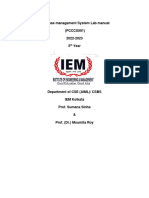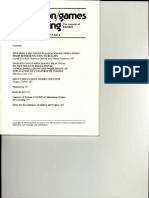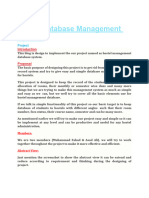0% found this document useful (0 votes)
247 views9 pagesDBMS Relational Calculus
The document discusses Relational Calculus, which is an alternate way to formulate queries compared to Relational Algebra. It is a non-procedural query language where the user is concerned with the results rather than how to obtain them. There are two types of Relational Calculus: Tuple Relational Calculus (TRC) and Domain Relational Calculus (DRC). TRC uses tuple variables to select tuples from a relation that satisfy a given predicate, while DRC uses attribute domains. The document also discusses functional dependencies, normal forms, and normalization.
Uploaded by
Gon FrecsCopyright
© © All Rights Reserved
We take content rights seriously. If you suspect this is your content, claim it here.
Available Formats
Download as PDF, TXT or read online on Scribd
0% found this document useful (0 votes)
247 views9 pagesDBMS Relational Calculus
The document discusses Relational Calculus, which is an alternate way to formulate queries compared to Relational Algebra. It is a non-procedural query language where the user is concerned with the results rather than how to obtain them. There are two types of Relational Calculus: Tuple Relational Calculus (TRC) and Domain Relational Calculus (DRC). TRC uses tuple variables to select tuples from a relation that satisfy a given predicate, while DRC uses attribute domains. The document also discusses functional dependencies, normal forms, and normalization.
Uploaded by
Gon FrecsCopyright
© © All Rights Reserved
We take content rights seriously. If you suspect this is your content, claim it here.
Available Formats
Download as PDF, TXT or read online on Scribd
/ 9

